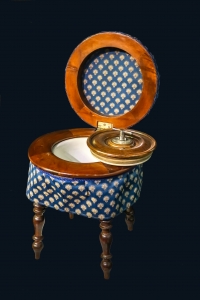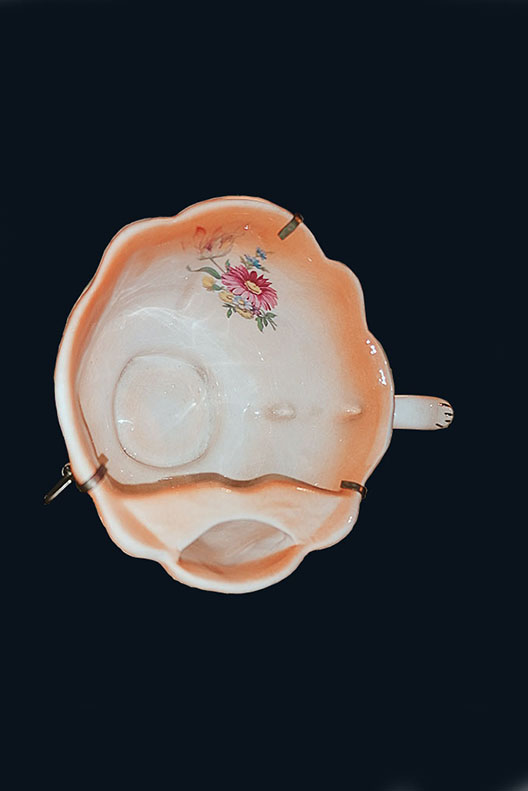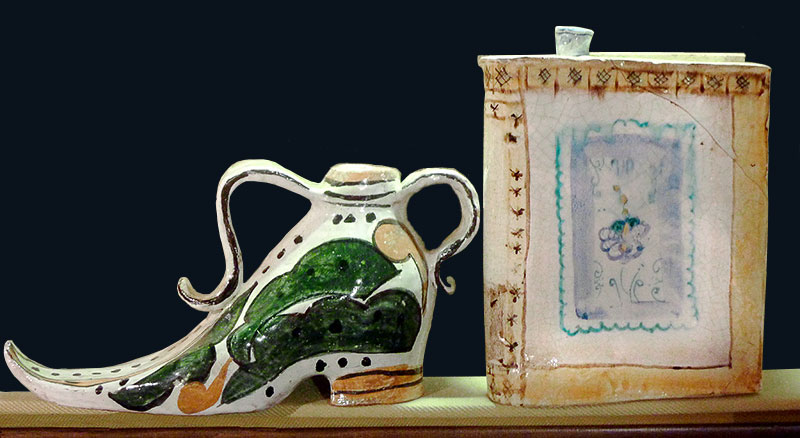Amusement, strange things and knowledge… The Museum of Curiosities is a
unique collection of over 100 original objects, which, in the past, were
normally used while today they look unusual and bizarre to us. You
will find people who have set world records too. Have you ever
seen a flea trap? It was used centuries ago, when hygiene was
poor. The woman with the thinnest waistline? A nose watch?
A rocking bath tub? Did you know that the first shower
had two water jets, one from the top and another
from the bottom, to have a shower and wash
your intimate parts at the same time.
The longest hair? Wooden nappies?
Yes. Surely uncomfortable
but still used in
Afghanistan.
FROM OUR COLLECTION OF PEOPLE.
The people displayed in our Museum have set the
strangest world records. They are faithfully
reproduced in a 1:1 scale and their stories
are told in detailed descriptions for your amusement.

ROBERT WADLOW
L’ uomo più alto del mondo
Robert Pershing Wadlow was born on February 22, 1918 in Alton Illinois – U.S.A., when he died on July 15, 1940 he was 272cm tall, wore shoes
number 61 (equivalent to 47cm long) and his hands measured 32cm. From the wrist to the tip of the middle finger. When Robert Wadlow was born he weighed kg. 3,850. At the age of 2 he underwent a double hernia operation, since then his height has progressively increased. He was still growing when he died.

PAULINE MUSTERS
The smallest woman of the world
When Pauline Musters was born in February 1876, she was 11.81in tall. At the age of nine she was 21.65 in tall and weighed just 3.30 pounds. Pauline died at the age of 19, having grown to a height of 23.22 in her weight as an adult ranger from 7.49 To 8.81 pounds and her vital statistics were 18.50 – 18.89 – 19.92.

JON BROWER MINNOCH
The fattest man
Jon Brower Minnoch, born on 29th september 1941, reached a weight of 1399.92 pound. Being so heavy, he was hospitalized for cardiac and lung insufficiency, but after a 2-year diet of 1200 calories per day, his weight dropped to 476.19 pounds. In 1981 he was hospitalized again as his weight had gone up by 200.61 Pounds in just a week. When he died on September 10th 1983, he weighed more than 793.65 pounds.
FROM OUR COLLECTION OF OBJECTS.
Our collection is formed by original objects really
built for common uses (well, not so common,
actually!) and used by the people of different
societies to fulfil particular needs. Through a
detailed description, visitors will be able to
understand what they were created for.

COMMODE
(France XVIII th century)
The toilet seat or commode or “thunder box” is composed of a seat with a circular hole and with a removable pot inside. It was used by nobles and craftsmen classes instead of the external house latrines. The design was discreet and camouflaged, often finished with precious fabrics and the richest versions were surmounted by canopies.

CUP FOR “GENTLEMEN WITH MOUSTACHES”
(London XIX th century)
This cup which helped gentlemen whit moustaches avoid soiling them when drinking was made and invented by an Englishman, Harvey Adams, in 1830 in Longton, Stoke-on-Trent. In addition to the cup for gentlemen with moustaches there were also tankards, glasses and even spoons whit a similar design. The cup was also available in a model for left-handed gentlemen.

MONOCLE TO HAT
(London XIX th century)
The monocle commonly in use in 1800, could fall or be forgotten. At the end of the century was proposed a new version of monocle attached to the hat with the so-called “Nuremberg scissors “. These could be simple or decorated as desired and could be made of different metals. This new monocle was particularly suitable for trips or walks.

HELMET FOR PERMANENT
(Italy XX th century)
This type of “Helmet” you/he/she was used in 1920 when the permanent ones were done to warm. Hair was sprinkled of acid, rolled up around a small but heavy iron curler and fixed to the molletons of the helmet, that connected to the electric tide to a temperature of 180-200 centigrade degrees, allowed the curling of the hair. This was a very aggressive method that damaged notably and often irremediably the structure of the hair, therefore subsequently the system was modified and they invented the permanent one to cold.

TOAST-GLASSES
(East Europe XVIII th century)
A set of 4 glasses without base ( happiness and long life ) : as a symbol of well being they were used only for one toast, then they were thrown away.
(Est Europe from 1700 to the early 1900).

HAND-WARMER
(Italy XVII th century)
Used in the Middle Ages, they were filled with hot water and used to warm the hands. Once they had come into fashion, they were made in various forms, from baskets to doves and from animals to shoes. The folding type, like those on display, often carried the portrait of the user’s beloved.
